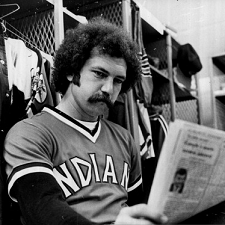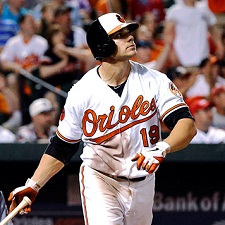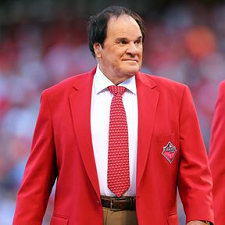HONORING MYRON COPE, A TRIPLE THREAT
Sunday, January 31st, 2016As an aspiring young sports writer, I couldn’t have been luckier. I grew up a few miles from here reading Roy McHugh, George Kiseda and Myron Cope. Nowhere in the country could you have found three better sports writers. In the same city yet.
We are here to honor Myron, but he would be pleased and flattered to know that one of the people here to honor him, the oldest person here to honor him, is none other than Roy McHugh. In the course of working on my presentation for this event, I was delighted to learn that Roy remains vibrant at the age of 100, which he turned last June.
Coincidentally, when I spoke with Gene Collier, a Post-Gazette sports columnist, and I brought up Roy, he said he would be seeing him the following day, and I asked Gene to tell him I would like to speak to him. Roy called me, we talked about Myron and I asked him if he would be interested in coming today. Talk about putting the icing on the cake, to use a cliché those guys would never have used, having Roy here puts a very thick layer of chocolate icing on the Cope cake.
We’ll hear from Roy later, but for now I will quote him as saying, “Myron had the best column.”
Myron Sydney Kopelman…
I was honored and flattered when David Schlitt asked me to be the keynote speaker for this event. As a result, you will have to hear me tell about the similarities Myron and I experienced in the first 20 or 30 years of our lives even though he was nearly 10 years older than I was.
We were both Jewish kids who grew up in Squirrel Hill. Unknown to each other because of our age difference, we lived less than a mile apart, at one point only six-tenths of a mile from each other. For all I know, our mothers played in weekly mah jongg games together.
We attended Taylor Allderdice High School and the University of Pittsburgh and wrote for both schools’ newspapers. While going to Pitt, we both lived at home and rode the No. 68 streetcar to school each day.
As small as we were – Myron admitted to being a quarter of an inch shorter than 5-5; I grew to be 5-6 – we both played on the Allderdice junior varsity basketball team.
At some point – it must have been the summer of 1958 – we worked at the Post-Gazette together, I as a copy boy, Myron as a staff member of the sports department. Memory playing tricks as it does, I would have thought Myron worked for the Post-Gazette longer than he did, but in his autobiography he says he worked for the newspaper for eight and a half years, which means he left the paper by the end of 1959, just before I began working in the Pittsburgh bureau of the Associated Press, whose night office adjoined the Post-Gazette news room..
I got to the AP as a result of my summer as a copy boy at the Post-Gazette, where I came to know Cope’s colleagues in the sports department. He brought back memories by mentioning some of them in his book – Al Abrams, Phil Gundelfinger Jr., Jimmy Jordan, Jack Sell, Dan McGibbeney, Fred Alger. We remembered Freddy Alger for different reasons. Myron recalled Alger missing his spittoon and spraying chewing tobacco juice on Myron’s shoes. I remember Alger because every night I had to go to a nearby tavern and get him a glass of red wine.
It was at the Post-Gazette that Myron Kopelman became Myron Cope. Joe Shuman, the city editor, changed his name for him for the sake of his byline. Shuman told Myron the paper had enough Jewish and Jewish-sounding bylines and didn’t need another one. Cope came to like his new name and kept it as he moved on from one career to another.
With today’s explosion of Internet sites and cable television outlets, it has become common for sports writers to yearn to become television stars. However, when Cope switched from writing to radio and then television, he was unique.
First, though, Myron became a magazine writer and what a magazine writer he was. After leaving the Post-Gazette he became one of the most sought after writers in the magazine-writing business. Editors at Sports Illustrated, the Saturday Evening Post, True magazine and others all sought Myron Cope’s byline.
Some of us preferred the daily writing newspapers afforded. Myron liked the expansiveness and financial benefits of magazines. If you want to read masterpieces, find and read some of Myron’s better known pieces, those on Roberto Clemente, Muhammad Ali when he was still Cassius Clay, Howard Cosell. The man had a knack for capturing his subjects in words. It is an art, and Myron used his verbal brush more adroitly than most.
Sadly – and I say sadly because the world can never have enough excellent writers – Myron gave up writing for his next career, and he is remembered best for that third and final carrer. The man with the worst voice in the world became a radio and television star.
“When he was asked to do radio,” McHugh said in our telephone conversation last week, “he said ‘I don’t have a radio voice.’ But there was a trend in radio toward obnoxious voices. He said he would consider it. His wife told him ‘don’t take that job. I’ll be embarrassed.’”
Some years after I left Pittsburgh for New York, I returned home to visit my parents. My father enjoyed sitting in one of his big chairs, either in the bedroom or the living room, and listening to the radio. This particular day I walked in, and he was listening to a sports talk show.
Static would have been easier to take.
“Who is that?” I asked. “What is that? Turn that off. You gotta turn that off.”
My reaction apparently was typical for a first-time listener. In his book, Cope tells of a first-day caller to the station that carried his morning sports show.
“Get that man off the air,” the caller pleaded. “I can’t wake up to a voice like that.”
Listeners, however, came to love that voice. They loved it and listened to it so often and so fervently that Myron became the lovable voice of the Steelers for 35 years.
McHugh related a story. “When he was writing those magazine pieces for Sports Illustrated,” McHugh told me, “no one in Pittsburgh knew about him. When he became a broadcaster he walked down the street and everybody knew him. He and I and Billy Conn were walking down the street and no one knew Conn, the light heavyweight boxing champion. They all knew Myron.”
Cope became a legend. What Steelers fans don’t remember Cope in the same way they remember Terry Bradshaw, Franco Harris, Joe Greene, Jack Ham, Jack Lambert?
In a way, he is better known than those Steelers stars because he created the Terrible Towel, the most famous piece of game-day accouterment in the football world.
But the Terrible Towel has an even greater significance. Cope assigned profits from sale of the towels to the Allegheny Valley School, an institution that deals with intellectual developmental disabilities. Myron and his wife, Mildred, had a severely autistic son whom Cope enrolled in the school. The rights have been worth millions of dollars to the school.
Cope made many of his career decisions based on Daniel’s welfare, including the decision to go to radio, which offered health insurance.
Few people have had one career as heralded as Cope’s, and he had two or three. Beano Cook was the public information director at Pitt when Cope was writing for the Post-Gazette.
“The guy had tremendous talent,” Cook said. “It’s too bad that the younger people never saw some of his writing. He was a heck of a writer, a very good writer. There’s a lot of people who will never know what a great writer he was.”
But those of us who know what a great writer he was do not begrudge him his success in radio and television. As a writer, he was a consummate professional. When he was working on a long magazine piece, he didn’t miss a thing. He picked up every bit of unusual dialogue and manner of speech. He captured his subject’s behavior, straight or strange. He was like a video recorder that someone aimed at Cope’s subject and never pushed the pause button.
When Cope was finished interviewing his subject, there was nothing more to be extracted.
As a broadcaster, he became a celebrity and a legend. His legacy will be there for all to see. When Steelers fans vigorously wave their Terrible Towels, Myron will be there with them. When the unforgettable Franco Harris catch is recalled, the phrase Immaculate Reception will immediately come to mind. That was Myron, too.
That incident also carries a personal note. My family and I were in Pittsburgh that day but not for the Steelers playoff game. We were here for my nephew’s bar mitzvah. Since the moment my 10-year-old son heard about the Immaculate Reception, he has not forgiven me for not having taken him to the game. I know that it wasn’t Myron who made the catch, but he only made our missing it worse.
Thanks, Myron.

 The contract runs for three years and will pay Cespedes $75 million. At three years, it is more manageable than many of the others, but at $25 million a year it has the third highest annual average (behind Greinke’s $34.4 million and Price’s $31 million).
The contract runs for three years and will pay Cespedes $75 million. At three years, it is more manageable than many of the others, but at $25 million a year it has the third highest annual average (behind Greinke’s $34.4 million and Price’s $31 million).
 I made it my primary goal to find out contract details and I was fortunately successful. After the first year of free agency Jerome Holtzman, a Chicago baseball writer, reported free-agent contracts in his annual review of the year in baseball in the “Official Baseball Guide.”
I made it my primary goal to find out contract details and I was fortunately successful. After the first year of free agency Jerome Holtzman, a Chicago baseball writer, reported free-agent contracts in his annual review of the year in baseball in the “Official Baseball Guide.”

 People in Toronto suspected that Anthopoulos said thanks but no thanks because he would not have final-say authority on trades. In a telephone conversation late Saturday, Anthopoulos declined to comment on that suspicion or say exactly why he opted to leave the Blue Jays.
People in Toronto suspected that Anthopoulos said thanks but no thanks because he would not have final-say authority on trades. In a telephone conversation late Saturday, Anthopoulos declined to comment on that suspicion or say exactly why he opted to leave the Blue Jays.
 Unique among the latter group is Ruben Amaro Jr., recently deposed general manager of the Philadelphia Phillies. He has another job in baseball but not in some team’s front office. When the 2016 season begins, Amaro will be the Boston Red Sox first base coach.
Unique among the latter group is Ruben Amaro Jr., recently deposed general manager of the Philadelphia Phillies. He has another job in baseball but not in some team’s front office. When the 2016 season begins, Amaro will be the Boston Red Sox first base coach.